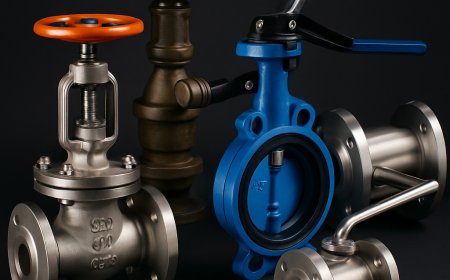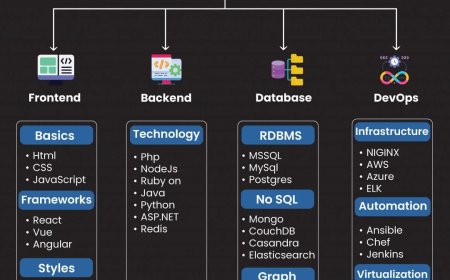AI Chatbot Development: Boost Your Sales with Smart Automation
Discover how AI chatbot development can enhance customer engagement, streamline support, and boost sales through smart automation tailored to your business needs.

In todays hyper-digital marketplace, customers demand instant responses, personalized experiences, and 24/7 support. Traditional sales strategieswhile still valuablestruggle to keep up with these evolving expectations. This is where AI chatbots enter the scene as game-changers. Businesses across industries are leveraging AI-powered conversational agents to automate sales, increase customer satisfaction, and drive revenue growth.
But what exactly are AI chatbots, and how can you develop one that truly boosts your sales? In this blog, well explore the concept, benefits, development steps, and best practices of AI chatbot development for sales automation.
What is an AI Chatbot?
An AI chatbot is a software application powered by Artificial Intelligence (AI), Natural Language Processing (NLP), and Machine Learning (ML) that simulates human-like conversations. Unlike rule-based bots, which follow scripted paths, AI chatbots can understand user intent, context, and sentimentenabling them to deliver personalized and relevant responses.
Modern AI chatbots are capable of:
-
Handling complex customer inquiries
-
Recommending products or services
-
Processing orders or bookings
-
Nurturing leads throughout the sales funnel
-
Integrating with CRM and eCommerce platforms
How AI Chatbots Drive Sales Growth
Lets break down the specific ways AI chatbots enhance your sales performance:
1. 24/7 Lead Engagement
AI chatbots work round-the-clock without breaks. Whether a potential customer visits your site at 2 PM or 2 AM, the bot is there to answer questions, provide product recommendations, and capture lead information.
? Stat: According to Drift, businesses using AI chatbots increase lead conversion rates by up to 67%.
2. Real-Time Personalization
AI chatbots analyze user data such as browsing history, preferences, and behavior to deliver tailored suggestions. A personalized experience often translates to higher conversion rates.
3. Faster Response Time
Studies show that response time is critical. Chatbots respond instantly, reducing bounce rates and ensuring the user stays engaged during the purchase decision window.
4. Sales Funnel Automation
From awareness to decision, a well-designed chatbot can guide users through the sales funnel:
-
Top of Funnel (ToFu): Answer FAQs, qualify leads
-
Middle of Funnel (MoFu): Share case studies, compare products
-
Bottom of Funnel (BoFu): Push special offers, close deals
5. Upselling & Cross-selling
Chatbots can suggest related or higher-tier products based on customer needs, just like a skilled salespersononly automated and scalable.
Key Features of a Sales-Driven AI Chatbot
To maximize your sales potential, your chatbot should have the following capabilities:
-
NLP-based conversation handling
-
Integration with CRM and eCommerce platforms
-
Lead scoring and qualification logic
-
Multichannel deployment (website, WhatsApp, Messenger, etc.)
-
Real-time analytics and reporting
-
Multilingual support
-
Secure data handling and privacy compliance
Step-by-Step Guide to AI Chatbot Development for Sales
Step 1: Define Your Goals
Start by identifying your chatbots primary objectives:
-
Do you want to capture more leads?
-
Reduce cart abandonment?
-
Upsell or cross-sell products?
-
Improve customer engagement?
Clear goals help shape the chatbots functionality and script.
Step 2: Understand Your Audience
Segment your customers based on:
-
Demographics
-
Buying behavior
-
Common queries
This will help you craft more effective conversation flows and anticipate user needs.
Step 3: Choose the Right Technology Stack
You have two main paths:
-
Build from scratch using platforms like Python, Rasa, or Dialogflow
-
Use no-code/low-code platforms like Tidio, Chatfuel, ManyChat, or Landbot
Each has pros and cons. Choose based on your technical resources, budget, and customization needs.
Step 4: Design the Conversation Flow
Create a conversation map. This should include:
-
Welcome messages
-
Lead qualification questions
-
Product/service suggestions
-
Escalation to human agents (if needed)
-
Closing CTAs (e.g., Book a demo, Add to cart)
Make the language friendly, brand-aligned, and outcome-focused.
Step 5: Integrate with Sales Tools
For a seamless experience, connect your chatbot to:
-
CRM (e.g., Salesforce, HubSpot)
-
Email marketing tools (e.g., Mailchimp)
-
Payment gateways (e.g., Stripe, PayPal)
-
Inventory or product databases
Integration ensures your bot operates as an intelligent sales assistant.
Step 6: Train and Optimize
Feed your bot with FAQs, support queries, product data, and customer interaction samples. Train it using AI and NLP algorithms.
Monitor metrics like:
-
Chat-to-lead conversion rate
-
Drop-off points
-
Engagement duration
-
Sales influenced by chatbot
Use this data to fine-tune and improve performance.
Best Practices for Sales-Focused Chatbots
-
Dont overload with options: Keep conversations simple and goal-oriented.
-
Add a human touch: Give your bot a personality (name, tone, greeting style).
-
Use proactive messaging: Trigger messages based on user behavior (e.g., Need help with sizing?).
-
Ensure mobile responsiveness: A huge chunk of chatbot interactions happen on mobile.
-
Test thoroughly: Run A/B tests on scripts, flows, and CTAs.
-
Respect privacy: Always disclose when users are talking to a bot and get consent for data use.
Top Use Cases by Industry
E-Commerce
-
Product recommendations
-
Cart recovery
-
Order tracking
-
Post-sale upselling
Real Estate
-
Lead qualification
-
Schedule property visits
-
Mortgage estimations
Healthcare
-
Appointment booking
-
Prescription reminders
-
Virtual triage for symptoms
Finance
-
Account opening assistance
-
Loan eligibility checks
-
Financial product education
B2B SaaS
-
Demo scheduling
-
Lead nurturing
-
Product walkthroughs
Success Stories: Brands That Got it Right
1. Sephora
The beauty giant uses AI chatbots on Messenger and their site to help customers with makeup tips, product recommendations, and booking in-store appointments, resulting in increased engagement and in-store footfall.
2. H&M
H&Ms chatbot on Kik guides users through outfit suggestions based on preferences, style choices, and occasions. This interactive experience drives higher conversions.
3. Duolingo
Though primarily an education app, Duolingo uses chatbots to simulate real-life conversationskeeping users engaged and improving retention, which leads to higher subscription rates.
The ROI of Smart Automation
Lets talk numbers. Implementing an AI chatbot can yield:
-
30-50% reduction in customer support costs
-
3-4x increase in engagement rates
-
50% faster lead qualification
-
20-25% growth in online sales
More importantly, it helps you scale without proportionally increasing your team size.
Conclusion
AI chatbot development is not just a trendit's a strategic investment. Businesses that embrace smart automation through conversational AI gain a significant edge in todays competitive landscape. Whether you're a startup looking to scale quickly or an enterprise aiming to optimize sales operations, AI chatbots can help you achieve more with less.
When thoughtfully developed and strategically deployed, AI chatbots are not just support toolsthey become revenue-generating assets.
























